Post by Deleted on Oct 9, 2011 15:00:06 GMT
On Saturday me and my dad went for a walk following the route of the Brill Tramway, a rural light railway which was once one of the furthest extents of the Metropolitan Railway and then the London Underground.
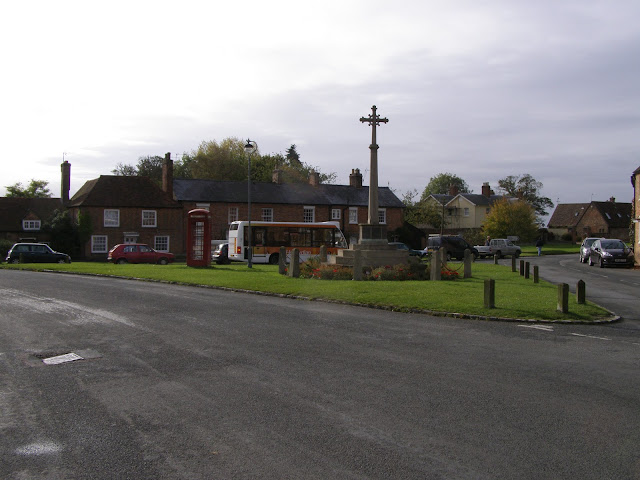
The logical way to do the walk would be from Quainton Road to Brill, but the buses did not make this direction possible, so we had to start at Brill. Doing it this way around has the advantage of ending the day at the Buckinghamshire Railway Centre.

Brill village is very picturesque, well kept place. It would have been nice be be able to get there by Metropolitan Line, but then I suppose if the railway was still open we would have had no reason to visit in the first place.
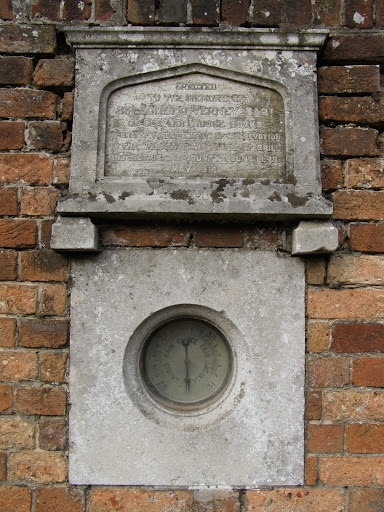
On a wall by the road towards the site of the station is this barometer, dedicated to Sir Edmund Verney, eldest son of Sir Harry Verney who gave his name to Verney Junction.
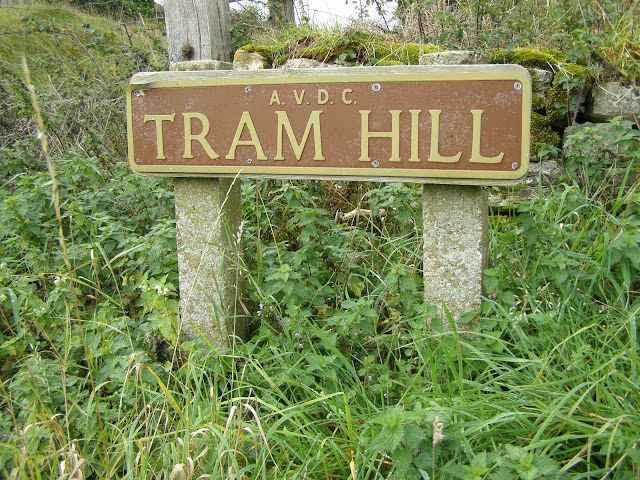
From the village we headed down the hill to the site of the station. The road is named after the tramway it used to lead to.
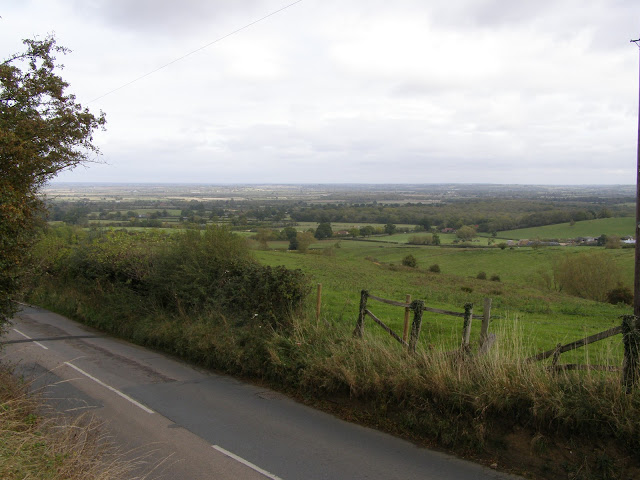
On the way down the hill there are beautiful views over the surrounding countryside.
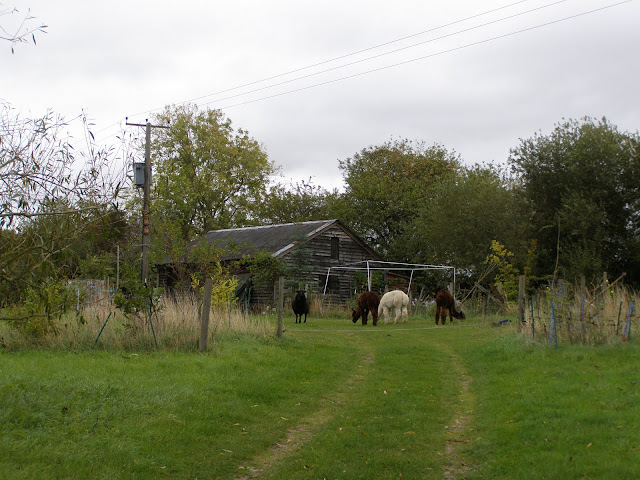
These llamas now occupy the site of Brill station.

The station cottages still survive, now named "Sleepers", presumably after remnants of the railway?
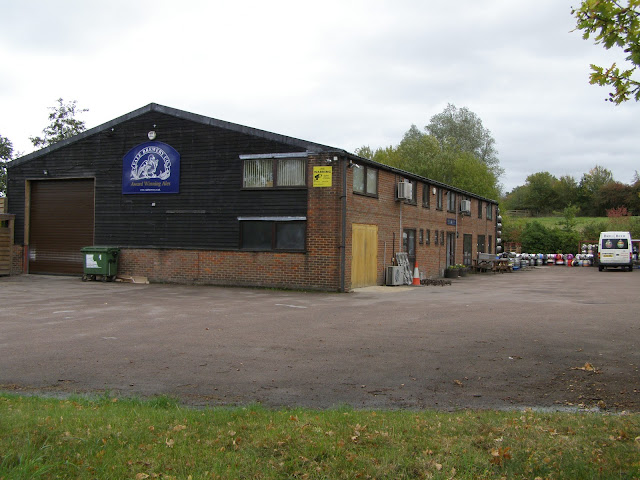
Adjacent to the station site is a brewery, which was until recently named the Tramway Business Park.
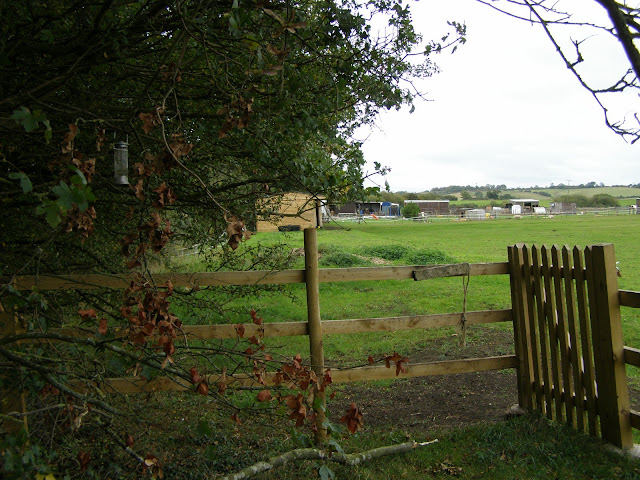
Leaving the station, the route of the tramway curves across the fields, and it is not possible to follow it directly. Instead we had to divert along footpaths and roads to reach this point, at which the tramway met the road and ran parallel to it. The slight rise on which the wooden stable sits is probably the trackbed of the tramway.
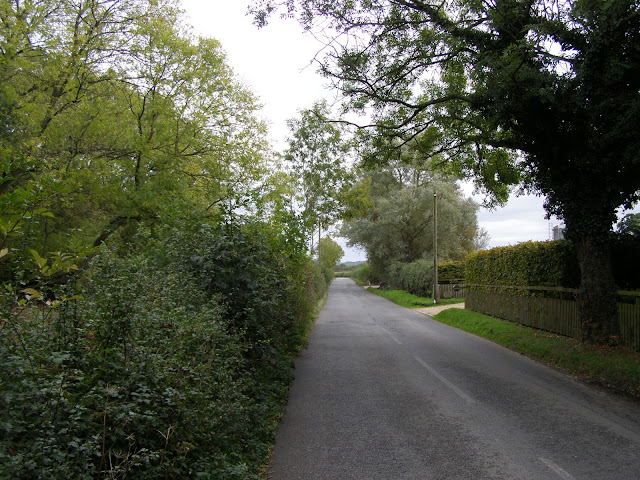
We could then follow the course of the tramway on the road which it ran alongside.

Occasional breaks in the hedgerow beside the road allowed us to see that the route of the railway was evident as a clear strip of field between the road and woods.

Eventually a gate allowed us to walk directly along the trackbed itself.
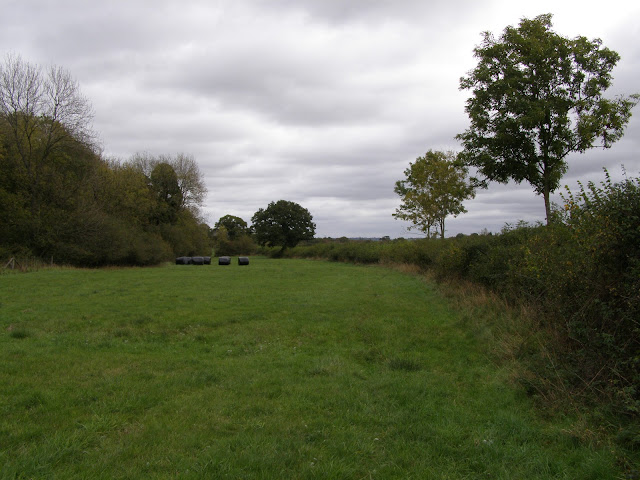
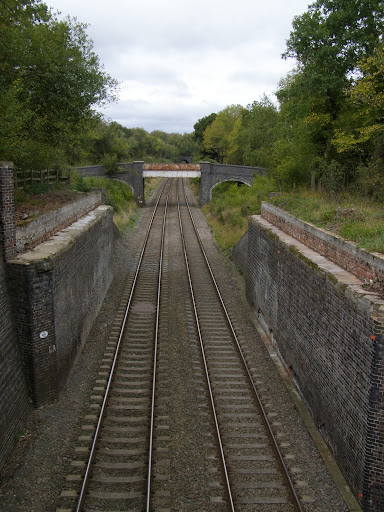
We soon reached the point where the tramway crossed what was the Great Western Railway, on a bridge whose remaining supports can still be seen on either side of the track. This was also the site of the first station on the line, Wood Siding, which sat partly on the bridge itself.
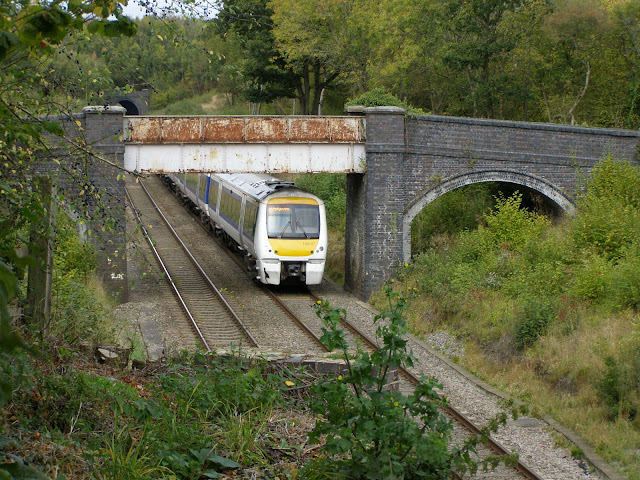
The mainline is now operated by Chiltern Railways.
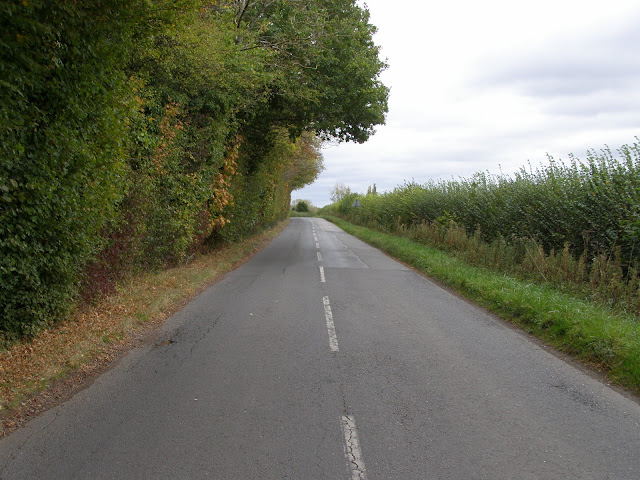
Beyond Wood Siding the tramway's trackbed itself is not accessible and we had to follow it on the parallel road.

Houses have been built over this part of the tramway, though its existence is noted in the name of one of them...
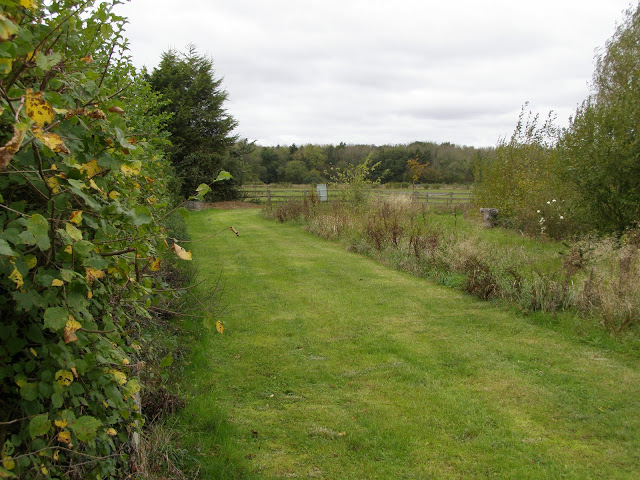
...and its path can be seen in their gardens.
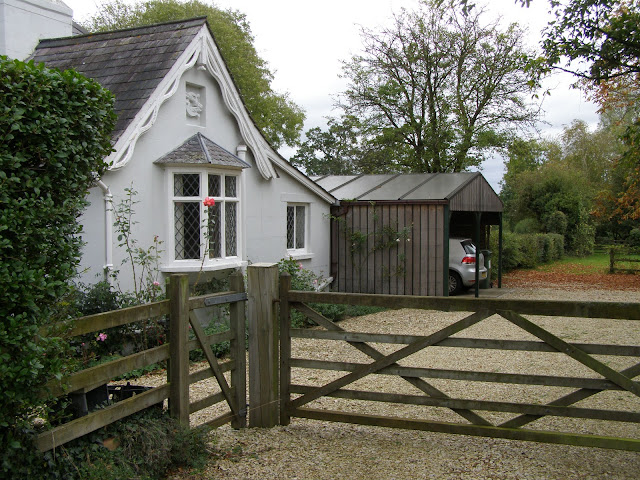
By these cottages the tramway left the road and ran towards Wotton.
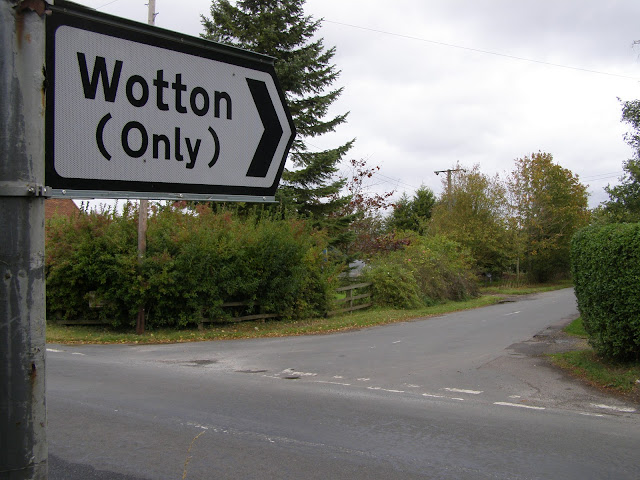
Its route is not a right of way so we had to follow the road to Wotton, which diverges at the same point.

We rejoined the tramway on the start of the Kingswood branch, which can be seen heading north in this view. We went the other way to meet up with the "mainline" at the site of Church Siding station.

Church Siding was somewhere around here, though where exactly is near impossible to determine.
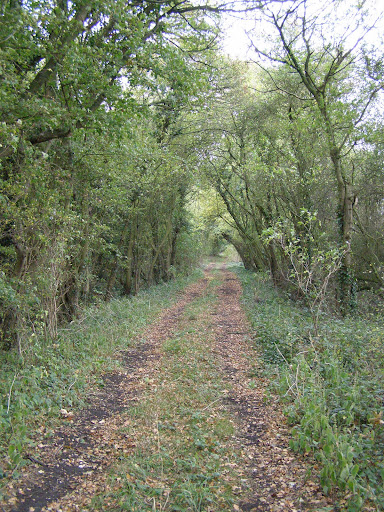
After Church Siding the trackbed is again a public footpath. Trees grow thick on either side and often join together above.
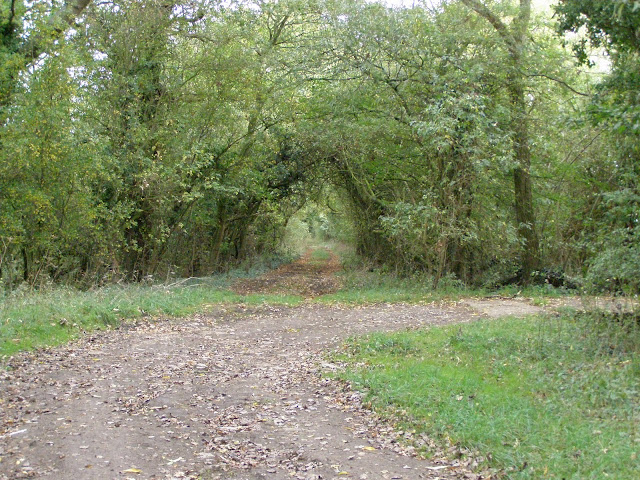
At the site of Wotton Station the tramway emerges into a clearing, looking like the mouth of a tunnel.

The tramway station cottages at Wotton still survive...
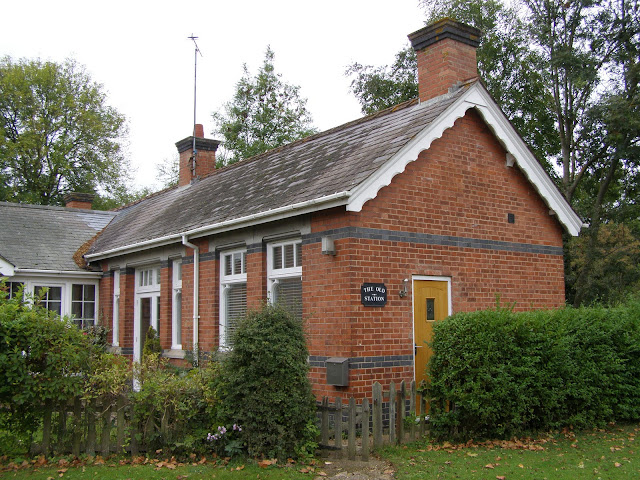
...as does the station building for the Great Central Wotton station, on the now closed line towards Rugby and Leicester which crossed the tramway here.
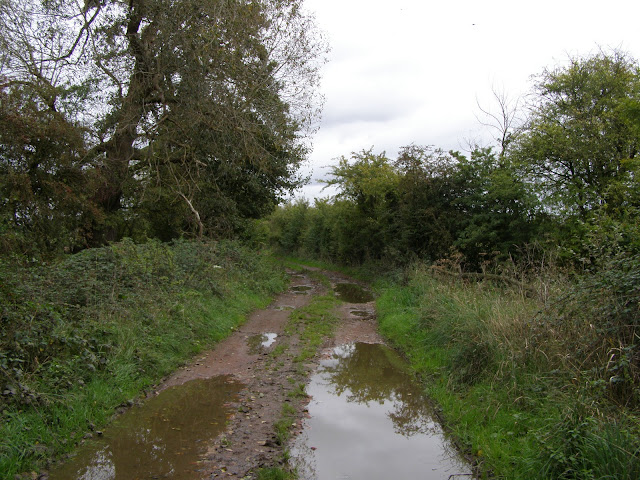
Beyond Wotton the tramway's route is not a right of way, and we had planned to reach Westcott on the road. However, we ran into a local who seemed to know what he was talking about who said we could follow the tramway to reach Westcott.

Though variously muddy and overgrown, this part of the tramway did appear to be passable...

...until we reached some very secure gates in a very tall fence. It seemed the local chap was either less knowledgeable than he appeared or having a bit of fun at the townies' expense.
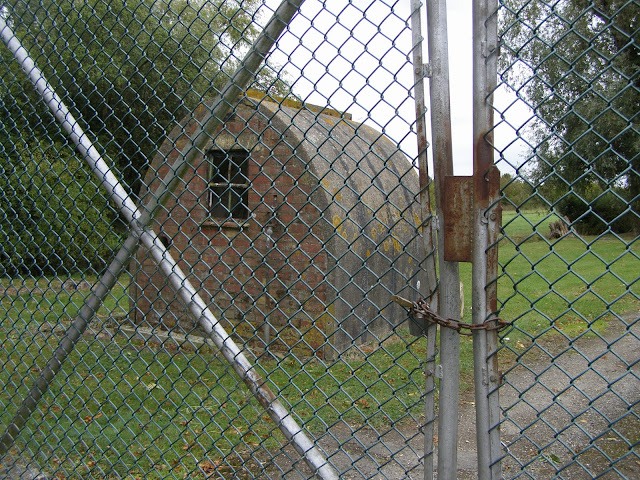
This was the edge of the former RAF Westcott, later the Guided Projectile Establishment and now Westcott Venture Park.
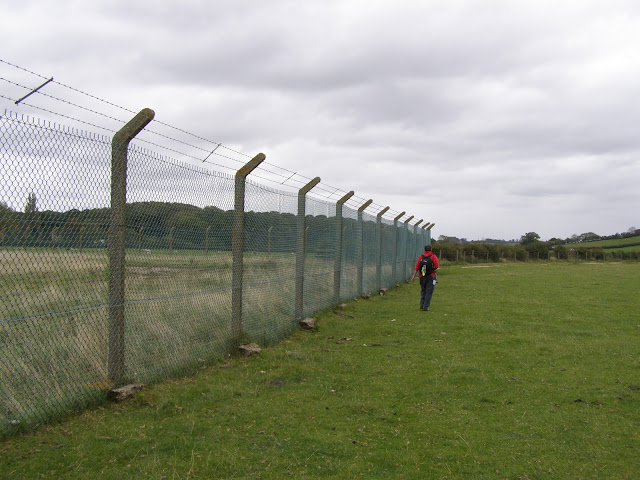
Rather than retrace our steps, then come back this way again along the road, we decided to follow the fence and head for a footpath which lead into Westcott village.

Occasional signs gave indications of the former use of the site.
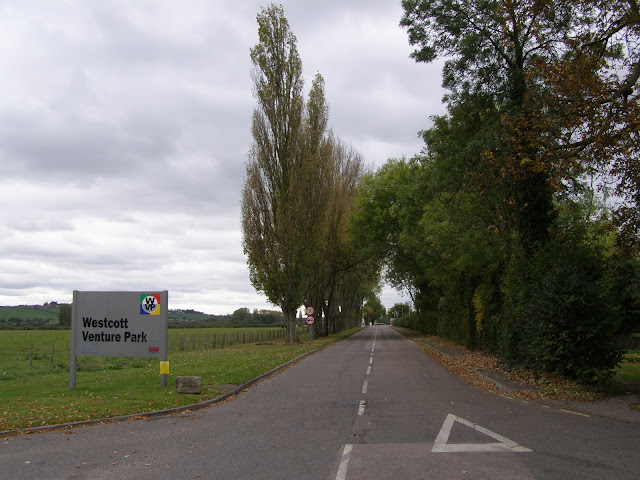
Having worked our way around the perimeter, we reached the entrance of the former airfield. The road leading to its main entrance follows the trackbed of the tramway, the route of which ran right across the site to the point where the gates had blocked our way.

The Venture Park entrance is at the location of Westcott Station, and opposite the station cottage again survives.

From Westcott the route of the tramway heads across fields towards Waddesdon Road station. A footpath follows the trackbed, but we somehow managed to lose the correct route, and ended up near Waddesdon Village.
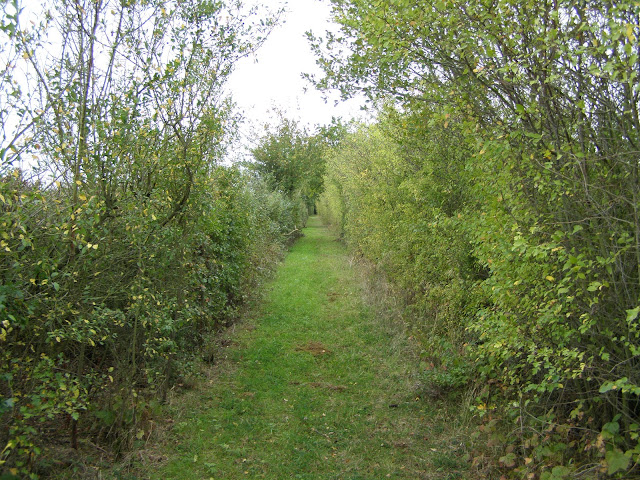
After heading some way along the road to get back to the tramway, we met up with it again on the last stretch towards Quainton Road. Here the trackbed forms a pretty, tree lined path running parallel with the road.
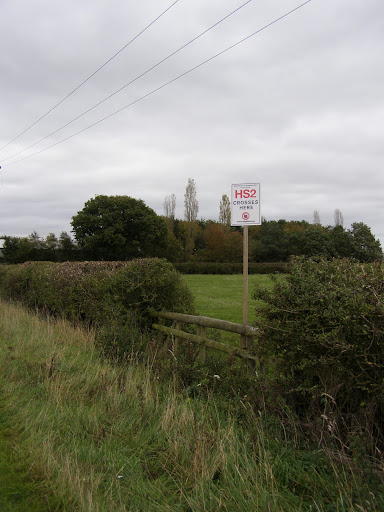
A sign indicated that HS2 will cross here, though I'm not sure whether it means this exact point or the general area.

Getting close to the end of our walk now, the route of the tramway curved off to the right into its platform at Quainton Road, while we had to cross the bridge to get to the public entrance.

A view of Quainton Road from the bridge over the line. The Brill Tramway platform is the short curved one to the right, protected by a tank. To the left is the former Oxford Rewley Road station building, now the main exhibition space of the Buckinghamshire Railway Centre.
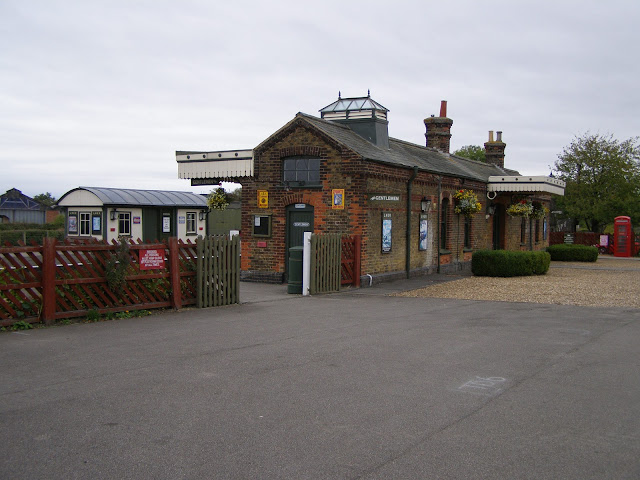
Here is the original Quainton Road station building...
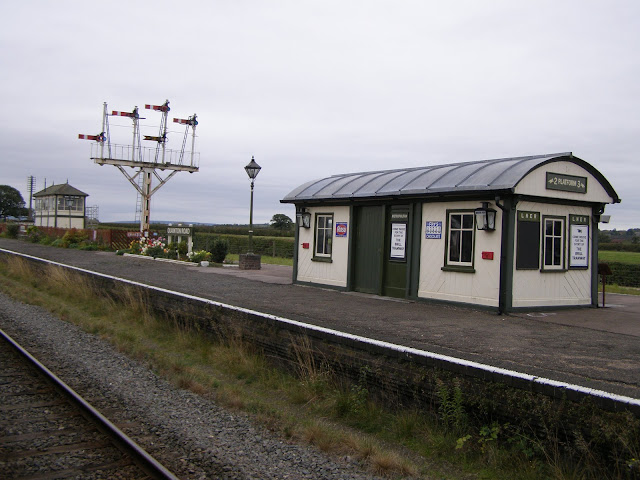
...and the island platform waiting room, which now houses an exhibition on the Brill tramway - unfortunately closed on the day of our visit.
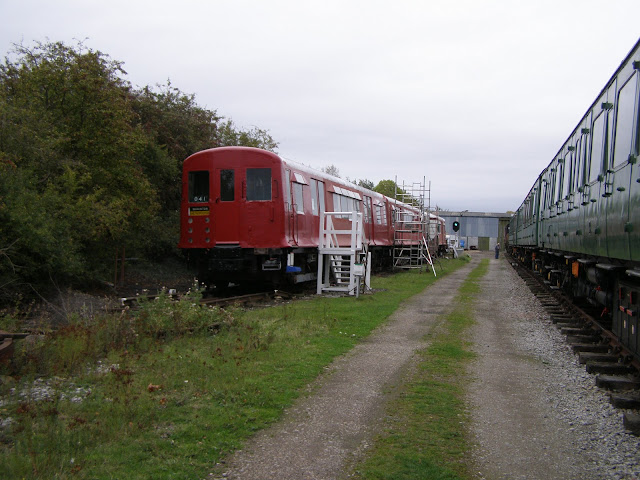
Besides once being part of the Metropolitan Line, the Buckinghamshire Railway Centre has another London Underground related feature, the only surviving train of CO/CP stock. The far driving car, No. 54233 is of particular interest in that half of it was destroyed in the blitz, and replaced with the good half of another bomb damaged vehicle, Q38 stock trailer 013167.
Paul
The logical way to do the walk would be from Quainton Road to Brill, but the buses did not make this direction possible, so we had to start at Brill. Doing it this way around has the advantage of ending the day at the Buckinghamshire Railway Centre.
Brill village is very picturesque, well kept place. It would have been nice be be able to get there by Metropolitan Line, but then I suppose if the railway was still open we would have had no reason to visit in the first place.
On a wall by the road towards the site of the station is this barometer, dedicated to Sir Edmund Verney, eldest son of Sir Harry Verney who gave his name to Verney Junction.
From the village we headed down the hill to the site of the station. The road is named after the tramway it used to lead to.
On the way down the hill there are beautiful views over the surrounding countryside.
These llamas now occupy the site of Brill station.
The station cottages still survive, now named "Sleepers", presumably after remnants of the railway?
Adjacent to the station site is a brewery, which was until recently named the Tramway Business Park.
Leaving the station, the route of the tramway curves across the fields, and it is not possible to follow it directly. Instead we had to divert along footpaths and roads to reach this point, at which the tramway met the road and ran parallel to it. The slight rise on which the wooden stable sits is probably the trackbed of the tramway.
We could then follow the course of the tramway on the road which it ran alongside.
Occasional breaks in the hedgerow beside the road allowed us to see that the route of the railway was evident as a clear strip of field between the road and woods.
Eventually a gate allowed us to walk directly along the trackbed itself.
We soon reached the point where the tramway crossed what was the Great Western Railway, on a bridge whose remaining supports can still be seen on either side of the track. This was also the site of the first station on the line, Wood Siding, which sat partly on the bridge itself.
The mainline is now operated by Chiltern Railways.
Beyond Wood Siding the tramway's trackbed itself is not accessible and we had to follow it on the parallel road.
Houses have been built over this part of the tramway, though its existence is noted in the name of one of them...
...and its path can be seen in their gardens.
By these cottages the tramway left the road and ran towards Wotton.
Its route is not a right of way so we had to follow the road to Wotton, which diverges at the same point.
We rejoined the tramway on the start of the Kingswood branch, which can be seen heading north in this view. We went the other way to meet up with the "mainline" at the site of Church Siding station.
Church Siding was somewhere around here, though where exactly is near impossible to determine.
After Church Siding the trackbed is again a public footpath. Trees grow thick on either side and often join together above.
At the site of Wotton Station the tramway emerges into a clearing, looking like the mouth of a tunnel.
The tramway station cottages at Wotton still survive...
...as does the station building for the Great Central Wotton station, on the now closed line towards Rugby and Leicester which crossed the tramway here.
Beyond Wotton the tramway's route is not a right of way, and we had planned to reach Westcott on the road. However, we ran into a local who seemed to know what he was talking about who said we could follow the tramway to reach Westcott.
Though variously muddy and overgrown, this part of the tramway did appear to be passable...
...until we reached some very secure gates in a very tall fence. It seemed the local chap was either less knowledgeable than he appeared or having a bit of fun at the townies' expense.
This was the edge of the former RAF Westcott, later the Guided Projectile Establishment and now Westcott Venture Park.
Rather than retrace our steps, then come back this way again along the road, we decided to follow the fence and head for a footpath which lead into Westcott village.
Occasional signs gave indications of the former use of the site.
Having worked our way around the perimeter, we reached the entrance of the former airfield. The road leading to its main entrance follows the trackbed of the tramway, the route of which ran right across the site to the point where the gates had blocked our way.
The Venture Park entrance is at the location of Westcott Station, and opposite the station cottage again survives.
From Westcott the route of the tramway heads across fields towards Waddesdon Road station. A footpath follows the trackbed, but we somehow managed to lose the correct route, and ended up near Waddesdon Village.
After heading some way along the road to get back to the tramway, we met up with it again on the last stretch towards Quainton Road. Here the trackbed forms a pretty, tree lined path running parallel with the road.
A sign indicated that HS2 will cross here, though I'm not sure whether it means this exact point or the general area.
Getting close to the end of our walk now, the route of the tramway curved off to the right into its platform at Quainton Road, while we had to cross the bridge to get to the public entrance.
A view of Quainton Road from the bridge over the line. The Brill Tramway platform is the short curved one to the right, protected by a tank. To the left is the former Oxford Rewley Road station building, now the main exhibition space of the Buckinghamshire Railway Centre.
Here is the original Quainton Road station building...
...and the island platform waiting room, which now houses an exhibition on the Brill tramway - unfortunately closed on the day of our visit.
Besides once being part of the Metropolitan Line, the Buckinghamshire Railway Centre has another London Underground related feature, the only surviving train of CO/CP stock. The far driving car, No. 54233 is of particular interest in that half of it was destroyed in the blitz, and replaced with the good half of another bomb damaged vehicle, Q38 stock trailer 013167.
Paul










